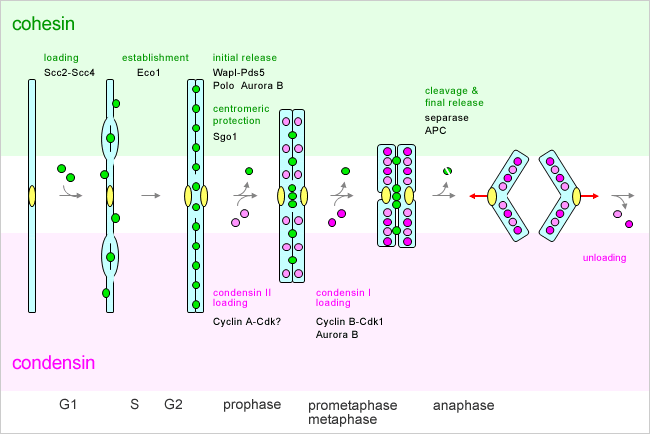(2) Regulation of SMC protein complexes
Over the past decade, a substantial body of evidence has accumulated that the concerted action of cohesin and condensins plays key roles in regulating the faithful segregation of chromosomes during the mitotic cell cycle (see figure below). In brief, cohesin establishes sister chromatid cohesion between duplicating DNAs in S phase. A large structural reorganization of chromosomes starts in prophase, with initial release of cohesin and progressive loading of condensins, and culminates in the formation of metaphase chromosomes with well-resolved sister chromatids. This process, chromosome condensation (or sister chromatid resolution), is a prerequisite of the final separation of sister chromatids that is triggered by proteolytic cleavage of cohesin at the onset of anaphase.
We study how the dynamic behavior of cohesin and condensin might be regulated under the control of the cell cycle machinery, and by a large number of specialized factors. In particular, we are interested in understanding what factor(s) might determine the spatial and temporal distribution of two different condensin complexes (condensins I and II) on chromosomes. It is also of great interest to investigate how the process of chromosome assembly might be linked to other chromosomal events such as DNA replication.















